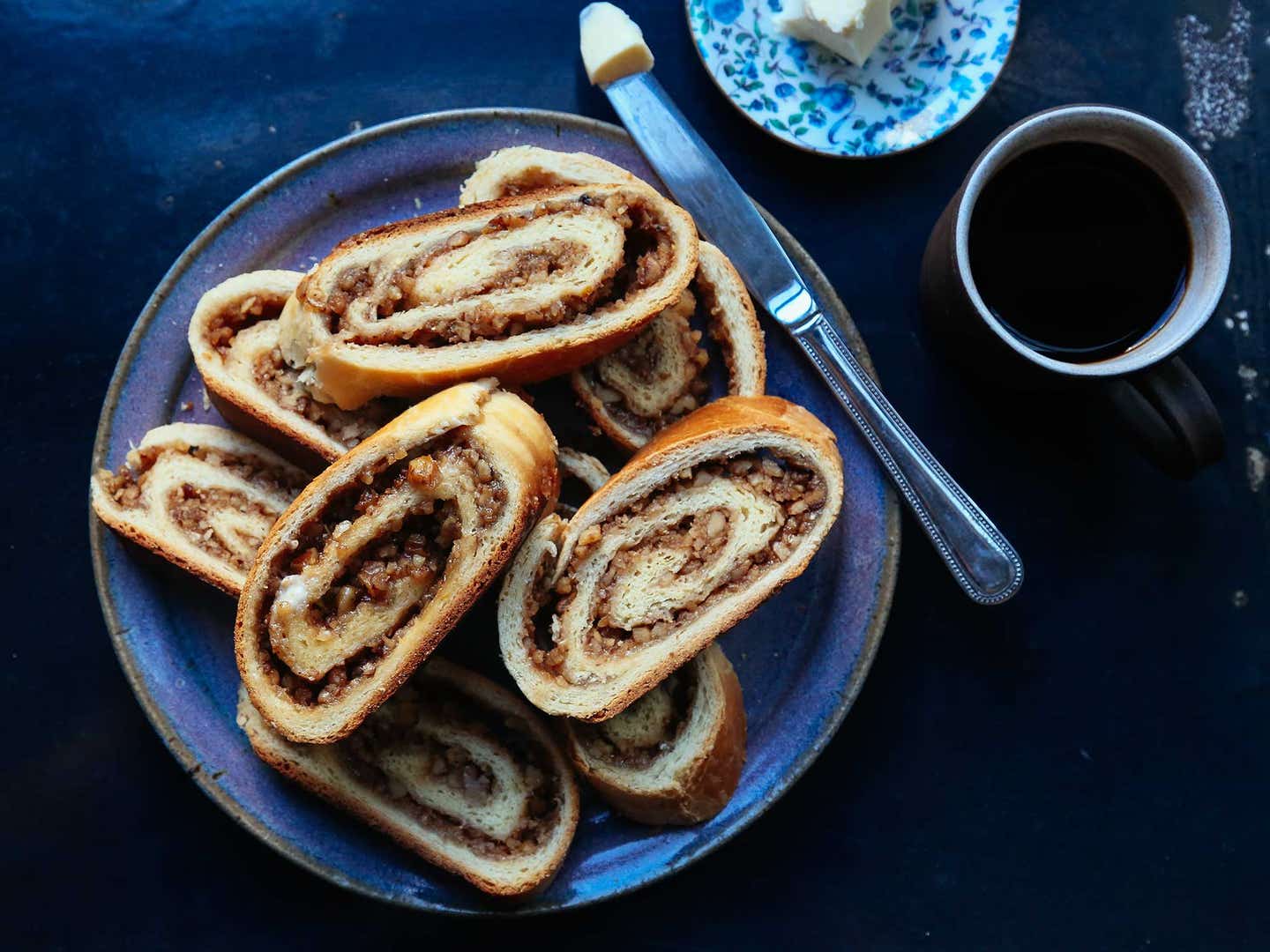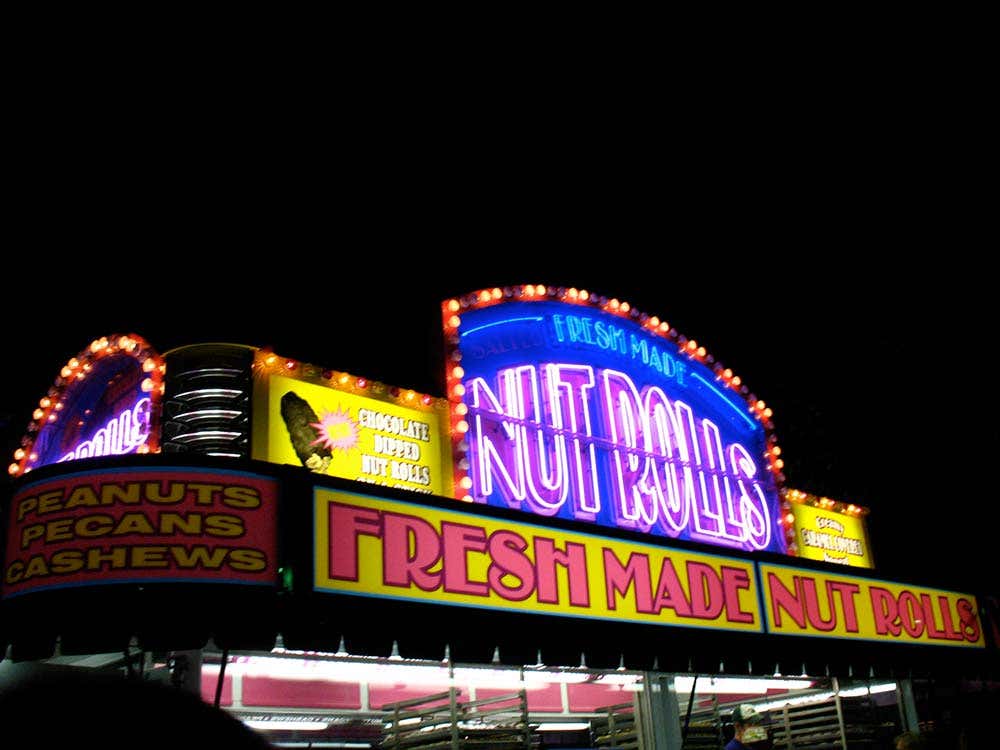
Go Make Pittsburgh’s Nuttier Alternative to Fruitcake
It’s called nut roll, and it’s so good it never lasts long enough to go stale
Fruitcake, the stories go, is a much-baked but little-eaten relic, the Christmas gift no one actually wants. As a child, I heard plenty of stories about bricks of stale fruitcake passed from giver to giver, but I didn’t actually encounter them very often. I’m from Pittsburgh, and we make nut rolls.
To be fair, we also make poppyseed rolls. Both are traditional at Christmas, especially as hostess gifts and treats for coworkers and other groups, but I’ve never seen one last long enough to go stale. Served sliced with coffee and often slathered with butter, these yeasty treats—somewhere between bread and strudel, sweet but not so sweet—are often homemade from passed-down recipes. My friends got theirs from their Slovak and Polish and Hungarian grandmothers; my grandma, who came from rural North Carolina, also got it from my friends’ Slovak and Polish and Hungarian grandmothers, who were her neighbors and friends.
If the roll isn’t homemade, though, it probably came from a nearby church bake sale. Churches topped with bright mosaics or shining onion domes perch on hills and nestle in river valleys throughout the Rust Belt, serving as beacons—and community centers—for the Eastern European immigrants who arrived in the United States en masse in the early 20th century.
They didn’t have it easy. Eastern European laborers got low pay for tough jobs, says Ron Baraff of Rivers of Steel National Heritage Area, like handling superheated steel ingots in the rolling mills of Pittsburgh’s steel industry. But they brought with them rich cultural traditions and built thriving communities all over the Rust Belt. McKeesport, Pennsylvania, an industrial town just south of Pittsburgh, had such a vital immigrant community that it actually spawned its own distinct dialect of the Hungarian language. The mills and factories of this period were a United Nations of workers; trade unions produced their own newspapers in dozens of languages. Grandpa was Scotch-Irish and German by background, but in the right company he could swear in Polish, Italian, and Slovak (and probably a few other languages I don’t know about).

As working people talked, their languages mixed and blended to become the regional accents we know today in Pennsylvania, Ohio, Indiana, and Minnesota (to name a few). And as they shared lunch breaks, celebrated holidays, and walked the picket lines together, they also learned about one another’s food traditions. Eastern European favorites like pierogi (a hearty potato dumpling) and halupki (cabbage stuffed with beef and rice and cooked in tomato sauce) began to spread beyond their immigrant roots and became popular in their own right, and the ladies who wore babushkas to bake in church basements found a wide market for their sweet holiday nut and poppyseed rolls.
The rolls they popularized come from all over Eastern Europe, a part of the world where recipes often have longer lives than governments, though it's easy to find Poles and Czechs, Bosnians and Belarussians all claiming them as their own. The trick is knowing the right words: poppyseed and nut rolls are both makowiec in Polish, while nut rolls are orahnjača and poppyseed are makovnjača in Croatian. Slovenian nut rolls are potica, while Slovak ones are povitica. Depending on the "old country" in question, they appear with varying names and spellings in bakeries and churches and homes across the United States, a factor that can complicate the Google searches of the hungry and nostalgic.
Whatever you call them, the same yeasted, buttery dough can be used for both versions; the nut roll is filled with walnut paste (often sweetened with honey or orange jelly), while the ground poppy seed filling is less sweet and sometimes includes raisins. As for the dough itself, the secret, I’m told, is the sour cream, which gives it a certain tenderness. It’s rolled out thin, slathered with filling, then rolled up into a log and topped with an egg wash, a bit of coarse sugar, or a handful of sliced almonds.
You can make a small nut roll and eat it over the sink for breakfast, or make one as long as your arm and share wrapped hunks of it with everyone you meet as a holiday greeting. You don’t need to have a Hungarian grandmother or even celebrate Christmas to enjoy this sweet and historic taste of Eastern Europe by way of the steel industry.

Keep Reading
Continue to Next Story










